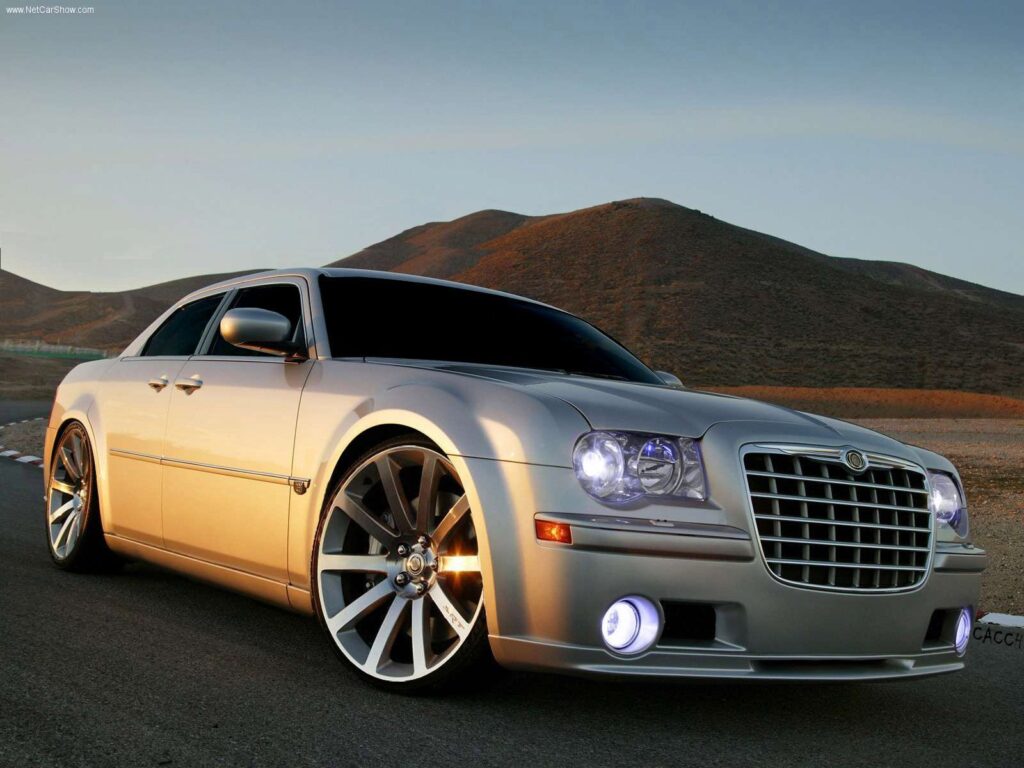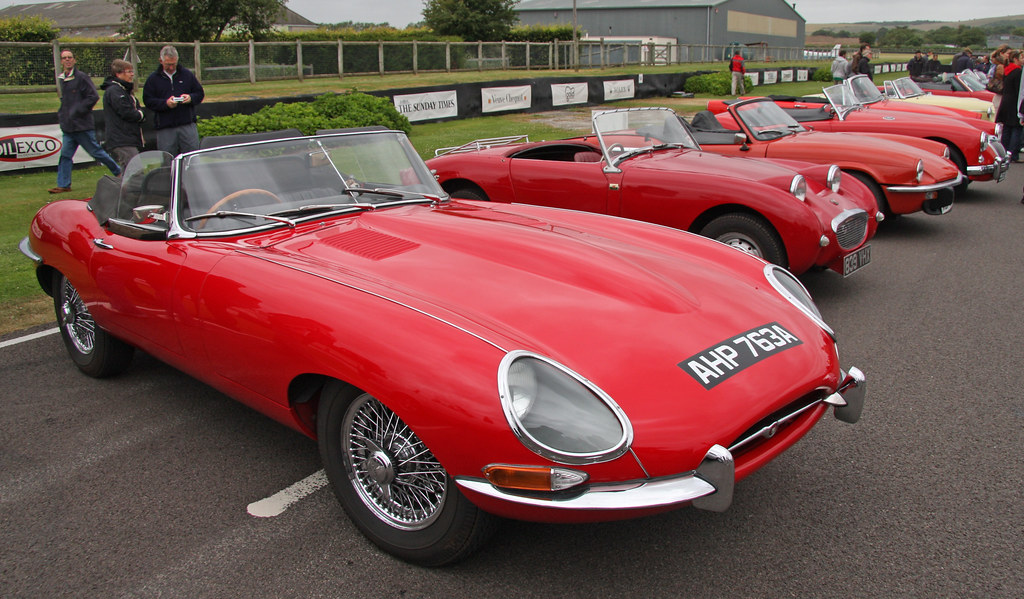
There’s an undeniable allure to sports cars, isn’t there? The promise of raw power, exhilarating speed, razor-sharp handling, and the sheer magnetism of turning heads wherever you go. For many, it’s the ultimate automotive dream, a potent cocktail of horsepower and prestige that justifies emptying a significant chunk of the savings account or taking on a multi-year loan. We’re talking about more than just transportation; we’re talking about an experience, a statement, a lifestyle.
Yet, as much as we love the dream, the reality of car ownership—especially when it comes to high-performance machines—can sometimes hit harder than a poorly executed apex. That initial rush of adrenaline can quickly give way to a nagging sense of dread, a sinking feeling that you might have just spent a fortune on something that, well, isn’t quite living up to the hype. It’s that bitter pill known as buyer’s remorse, and it’s a feeling no enthusiast wants, particularly when the price tag enters six-figure territory.
So, before you strap into that flashy coupe or muscle car, rev the engine, and peel out of the dealership with dollar signs in your eyes, it pays to pump the brakes. We’ve spoken to auto industry insiders who are dishing out the hard truths about specific sports car models. These aren’t just about performance numbers; they’re about the often-overlooked reliability issues, the hidden costs that can drain your wallet faster than a supercharger drains a tank, and the rivals that simply offer more for less. Consider this your essential guide to sidestepping those high-priced, high-powered bundles of regret.
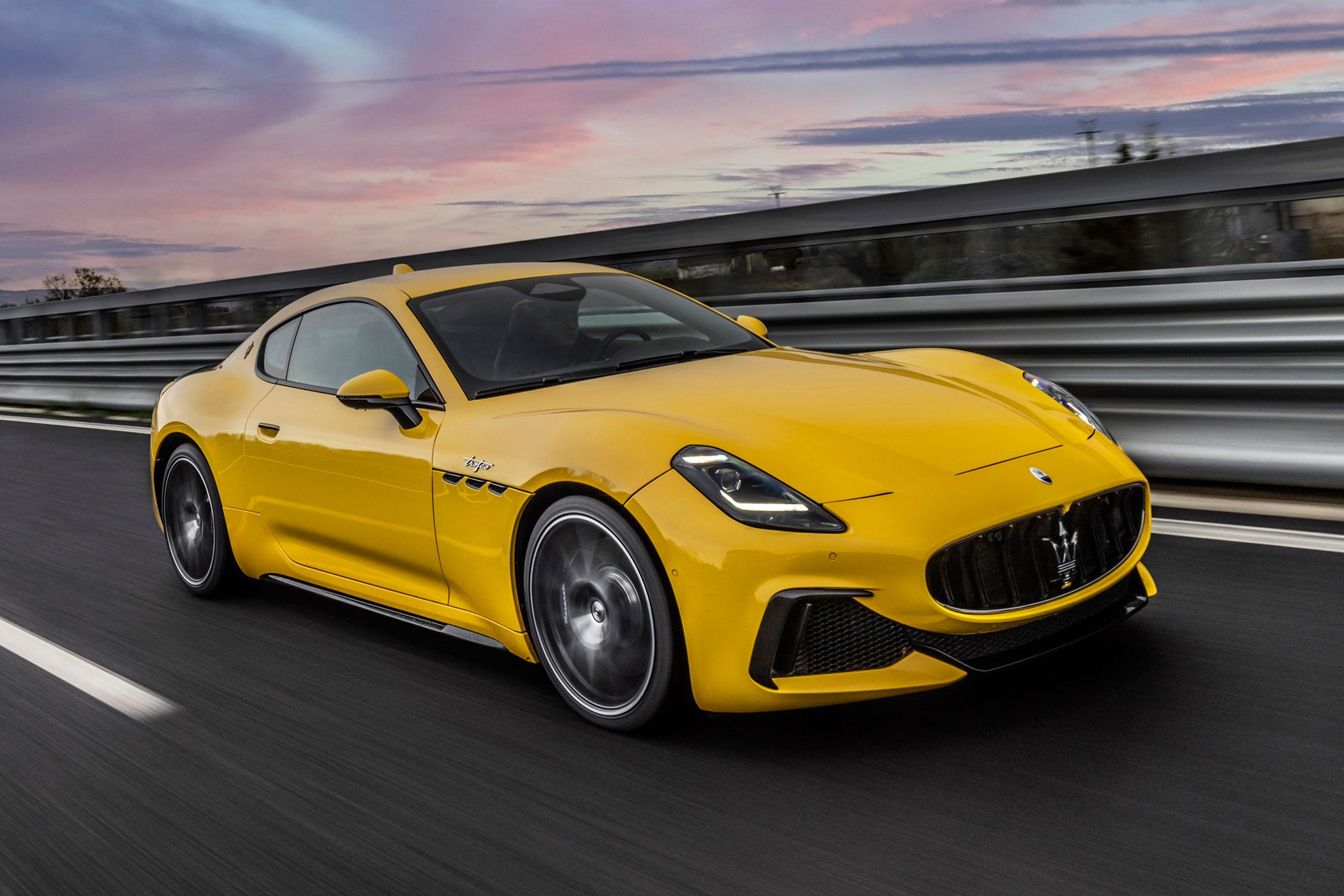
1. **Maserati GranTurismo**
Ah, the Maserati GranTurismo. Just the name itself whispers Italian flair, sophistication, and a performance profile that promises to stir the soul. With an MSRP that often hovers around the $174,000 mark, depending on the model year, it’s certainly a car that commands attention and respect, visually and audibly. Its sleek lines and distinctive growl are designed to make onlookers swoon and drivers feel like they’ve truly arrived.
However, as Erin Kemp, a consumer advocate with Bumper, sagely cautions, this is a vehicle that consumers should “think twice about before purchasing.” While it undoubtedly catches the eye and boasts a compelling performance profile, its Achilles’ heel seems to be its reliability. Many owners have reported persistent issues, specifically those related to the engine and the car’s intricate electrical system.
And here’s where the real pain kicks in: when things inevitably go wrong with a Maserati, the repairs are not just costly; they are excruciatingly so. This isn’t your average mechanic shop visit; you’re looking at specialized parts, expert labor, and bills that can make your eyes water. What’s more, Kemp points out a critical nuance for potential buyers: “Cars like this aren’t meant to have a bunch of miles on them, so you can run into expensive problems if you use them for everyday driving.” That stunning exotic might be a weekend warrior’s dream, but as a daily driver, it could quickly become an ongoing financial headache.
Car Model Information: 2012 Maserati GranTurismo MC
Name: Maserati GranTurismo,Maserati GranCabrio
Manufacturer: Maserati
Production: 2007 – December 2019 (40,520 produced),April 2023 – present
ModelYears: 2008–2019,2023–present
Class: Grand tourer
BodyStyle: 2+2 (car body style),coupé
Predecessor: Maserati Coupé
Categories: 2010s cars, All articles lacking reliable references, All articles with unsourced statements, Articles lacking reliable references from October 2024, Articles with hAudio microformats
Summary: The Maserati GranTurismo and GranCabrio are a series of grand tourers produced by the Italian manufacturer Maserati, succeeding the Maserati Coupé and Spyder.
The first generation GranTurismo (M145) was introduced at the 2007 Geneva Motor Show and was produced from 2007 to December 2019. It set a record for the fastest development of a car, going from design to production in just nine months. The model featured a 4.2-litre V8 engine initially, which was later upgraded to a 4.7-liter engine in the GranTurismo S variant. The GranTurismo MC, a racing version developed for the FIA GT4 European Cup, and the GranTurismo MC Sport Line, a customisation programme, were also part of the lineup.
The GranTurismo Sport, introduced in 2012, replaced the GranTurismo S and featured a revised 4.7-litre engine. The GranTurismo MC Stradale, unveiled in 2010, is a more track-focused version inspired by a race variant. The GranCabrio convertible version was unveiled at the 2009 Frankfurt Motor Show and produced from 2010 to 2019. The GranCabrio Sport was introduced in 2011 and the GranCabrio MC was launched in 2013, the latter featuring improved aerodynamics and a light bump in power.
The second generation, GranTurismo II (M189), was revealed in 2022 and began production in April 2023. It offers three models: Modena, Trofeo, and Folgore (electric). Based on the Giorgio Sport platform, petrol engined models feature a newly-developed 3.0-litre Nettuno twin-turbocharged V6 engine, with the Trofeo variant being the most powerful at 550 PS (405 kW; 542 hp). The Folgore model is a battery electric version with a range of 450 km (279.6 mi).
Get more information about: Maserati GranTurismo
Buying a high-performing used car >>>
Brand: Maserati Model: GranTurismo
Price: $39,999 Mileage: 24,295 mi.
Read more about: Bringing Back Legends: 15 Iconic ’60s Cars That Truly Deserve a Modern Comeback

2. **Lotus Evora**
For those who cherish a pure, unadulterated driving experience, the Lotus Evora, produced for just over a decade until 2021, often stands as a beacon. The motoring world, in a bon voyage tribute during its final production year, even lauded it as “the perfectly imperfect sports car.” It’s a machine built for the road, prioritizing driver engagement and connection over creature comforts, offering a truly raw feel that speaks to the purist.
But with a starting price that nudges close to $100,000, one might reasonably expect a little less imperfection, especially in areas that impact ownership satisfaction. Joe Giranda, director of sales and marketing for CFR Classic, confirms the Evora’s inherent strengths, acknowledging that it “boasts a raw driving experience.” Yet, he swiftly moves to its significant downsides, noting that “it’s been criticized for reliability issues over the years.”
Beyond the mechanical quirks, the Evora also falls short when you start comparing it to other vehicles in its stratospheric price bracket. Giranda highlights a common complaint: “its interior lacks the polish and comfort features found in other sports cars at its price point.” While a minimalist cabin might appeal to track-day enthusiasts, for nearly six figures, many buyers anticipate a certain level of refinement and amenity that the Evora, unfortunately, just doesn’t deliver, making it a difficult pill to swallow for such a premium price.
Car Model Information: 2012 Lotus Evora 2+2
Name: Lotus Evora
Caption: Lotus Evora 400
Manufacturer: Lotus Cars
Production: 2009–2021,6,117 produced
ModelYears: 2010–2021
Assembly: Hethel,Norfolk,England
Designer: Russell Carr
Class: Sports car
BodyStyle: 2+2 (car body style),coupé
Related: Lotus 3-Eleven,Infiniti Emerg-e
Layout: Rear mid-engine, rear-wheel-drive layout
Engine: Toyota,Toyota GR engine#2GR-FE,V6 engine
Transmission: Aisin Seiki#Aisin AI,Manual transmission
Wheelbase: 2575 mm
Abbr: on
Length: 4395 mm
Width: 1848 mm
Height: 1229 mm
Weight: cvt
Sp: uk
Successor: Lotus Emira
Predecessor: Lotus Europa S
Categories: 2+2 coupés, All articles with dead external links, Articles with dead external links from December 2018, Articles with dead external links from May 2019, Articles with hAudio microformats
Summary: The Lotus Evora is a sports car produced by the British company Lotus. The car, which was developed under the project name Project Eagle, was launched on 22 July 2008 at the British International Motor Show. The Evora S was launched in 2010 with a supercharged 3.5-litre V6. A facelifted and more powerful Evora 400 model was unveiled at the 2015 Geneva Motor Show, followed by another more powerful variant, the Evora GT430, which was unveiled in 2017.
The Lotus Evora is based on the first all-new vehicle platform from Lotus Cars since the introduction of the Lotus Elise in 1995 (the Exige and the 2006 Europa S are both derivatives of the Elise). The Evora was planned to be the first of three vehicles to be built on the same platform. The sales target was 2,000 cars per year, with prices between £45,000 and just over £50,000, and sales in America scheduled from the beginning of 2010.
Get more information about: Lotus Evora
Buying a high-performing used car >>>
Brand: Lotus Model: Evora
Price: $49,995 Mileage: 22,662 mi.
Read more about: Unlocking Automotive Assets: The 15 Classic Cars Poised for Serious Returns and How to Invest Smartly

3. **Jaguar F-Type**
The Jaguar F-Type is a breathtaking piece of automotive artistry, a car that perfectly encapsulates the blend of power, performance, and undeniable style that the British luxury brand is known for. With a potent engine lineup and aesthetics that drop jaws, it truly is, as auto expert Chris Pyle remarked, a car that “marks every box for what you want and like from the car.” Starting at around $79,000, it presents a compelling case for those seeking a grand touring experience with a sporting edge.
However, beneath that gorgeous exterior lies a reputation, earned or not, that has plagued Jaguar for years: a propensity for frequent breakdowns. Frank De Mulder, a 30-year auto industry veteran and founder of Classic Car Maintenance, minced no words on this front. He confirmed that while the F-Type is “a beautiful car with a potent engine lineup,” it has also “been criticized for its reliability.” Owners, according to De Mulder, have specifically reported “electronic and powertrain issues.”
These aren’t just minor annoyances; such problems “can be costly to repair out of warranty,” turning that dream car into a financial black hole. Pyle echoes this sentiment, warning that “you will be at the dealership often for engine electrical issues” once the factory warranty expires. De Mulder further suggests that for a similar performance envelope, a “Porsche 911 or Chevrolet Corvette might offer similar performance with a better reliability track record,” making the F-Type a hard sell when viewed through a pragmatic lens.
Car Model Information: 2015 Jaguar F-TYPE R
Name: Jaguar F-Type (X152)
Caption: Jaguar F-Type R-Dynamic coupé
Manufacturer: Jaguar Land Rover
Aka: Lister LFT
Production: 2013–2024
ModelYears: 2014–2024
Assembly: Birmingham,England
Designer: Ian Callum,César Pieri (Project 7)
Class: Sport car
BodyStyle: unbulleted list
Platform: Jaguar Land Rover car platforms#D6a
Related: Jaguar C-X16
Layout: Front-engine, rear-wheel-drive layout
Engine: ubl
Powerout: ubl
Abbr: on
Transmission: ubl
Wheelbase: Convert
Length: 4470 mm
Width: 1923 mm
Height: 1308 mm
Weight: convert
Sp: uk
Predecessor: Jaguar XK
Categories: All articles with failed verification, All articles with unsourced statements, Articles with failed verification from April 2025, Articles with short description, Articles with unsourced statements from November 2018
Summary: The Jaguar F-Type (X152) is a series of two-door, two-seater sports cars manufactured by British car manufacturer Jaguar Land Rover under their Jaguar Cars marque from 2013 to 2024. The car’s JLR D6a platform is based on a shortened version of the XK’s platform. It is the so-called “spiritual successor” to the E-Type.
The car was launched initially as a 2-door soft-top convertible, with a 2-door fastback coupé version launched in 2013. The F-Type underwent a facelift for the 2021 model year. It was unveiled in December 2019, featuring a significantly restyled front end and dashboard, and simplified drivetrain options. Jaguar announced that the F-Type will be discontinued after the 2024 model year. Production ended in June 2024, by which time 87,731 examples had been built.
Get more information about: Jaguar F-Type
Buying a high-performing used car >>>
Brand: Jaguar Model: F-Type
Price: $47,591 Mileage: 15,327 mi.
Read more about: Beyond the Giveaways: Oprah Winfrey’s Jaw-Dropping Car Collection, From Vintage Gems to Modern Marvels!

4. **Alfa Romeo 4C**
The Alfa Romeo 4C, despite being discontinued in 2020, remains a cult classic and a popular choice among those who adore a truly uncompromised driving machine. It’s a lightweight, mid-engined marvel, designed from the ground up to be a visceral experience, a direct conduit between driver and road. Frank De Mulder aptly describes it as “a pure driver’s car” and affirms it’s “a blast on the track,” which speaks volumes about its intended purpose.
But, as is often the case with such focused machines, that purity comes with some rather significant sacrifices. The 4C is not for the faint of heart, nor for those who prioritize comfort and convenience in their daily commute. De Mulder highlights these compromises vividly, noting that it “comes with significant sacrifices in terms of comfort and convenience.”
For starters, the 4C notoriously “lacks power steering,” meaning low-speed maneuvers require a level of upper body strength rarely demanded by modern cars. Furthermore, its cabin is described as “quite sparse,” a deliberate choice to save weight but one that leaves much to be desired for long journeys or even short stints in heavy traffic. While it’s a phenomenal track weapon, De Mulder suggests that “those looking for a sports car to enjoy on all occasions might prefer the Porsche Cayman, which offers thrilling performance without compromising on comfort.”
Car Model Information: 2023 Dodge Charger SXT
Name: Alfa Romeo 4C,Alfa Romeo 4C Spider
Manufacturer: FCA Italy
Production: [object Object]
Assembly: Modena
Class: Sports car
Layout: Rear mid-engine, rear-wheel-drive layout
BodyStyle: coupé
Engine: Fiat Pratola Serra modular engines,Turbocharger,Straight-four engine
Transmission: Dual clutch transmission,FPT C635 DDCT transmission
Wheelbase: 2380 mm
Abbr: on Coupé
Length: 3989 mm
Width: 2090 mm
Height: 1183 mm
Weight: 940 kg
Related: Abarth Classiche 1000 SP
Designer: Marco Tencone
ModelYears: 2014–2020
Categories: Alfa Romeo concept vehicles, Alfa Romeo vehicles, All articles with unsourced statements, Articles with short description, Articles with unsourced statements from April 2022
Summary: The Alfa Romeo 4C (Type 960) is a mid-engined sports car that was produced by Italian car manufacturer Alfa Romeo. Unveiled at the 2013 Geneva Motor Show, the 4C was initially only available as a coupé, with a spider body style coming a few years later in 2015. The name 4C refers to its straight-four engine.
Get more information about: Alfa Romeo 4C
Buying a high-performing used car >>>
Brand: Alfa Romeo Model: 4C
Price: $30,999 Mileage: 53,386 mi.
Read more about: Beyond the Pitch: David Beckham’s Coveted 1o-Car Collection — A Masterclass in Automotive Luxury and Style
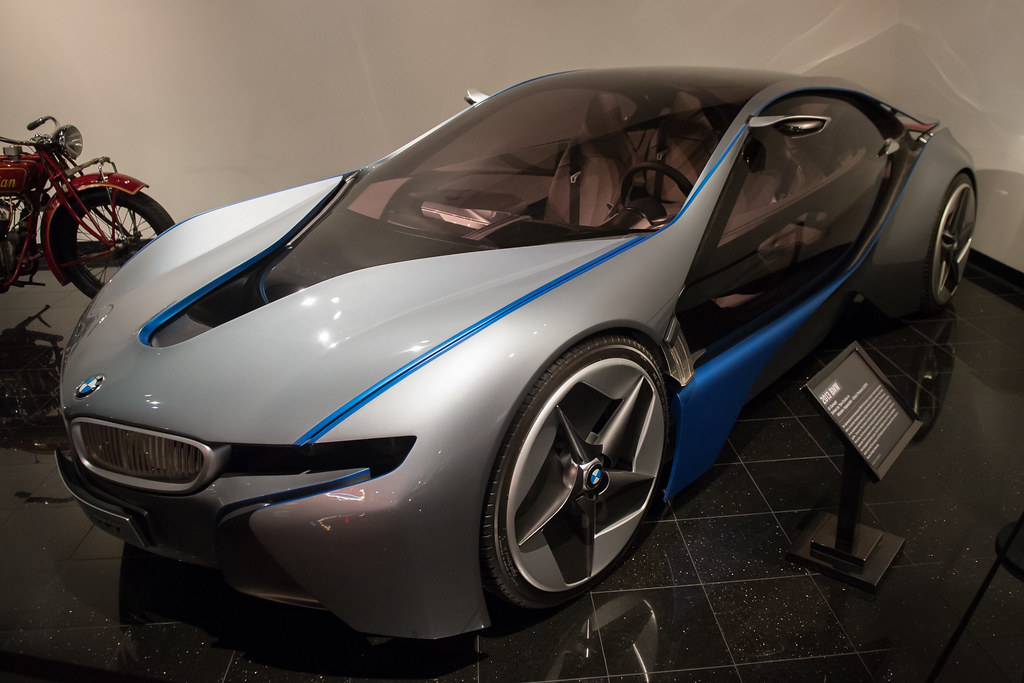
5. **BMW i8**
The BMW i8 was, and still is, a visual marvel, a plug-in hybrid supercar that truly felt like a “glimpse into the future” when it debuted. Its futuristic design, complete with scissor doors and a striking silhouette, made it an instant icon and a bold statement about performance meeting sustainability. Like the Alfa Romeo 4C, its final production year was 2020, marking the end of an era for this groundbreaking machine.
However, while its looks promised supercar thrills, its actual performance often left enthusiasts wanting. Frank De Mulder articulates this sentiment precisely: “its performance doesn’t quite live up to its supercar looks.” For a car that commands an MSRP ranging from $148,495 to $164,295, a disconnect between its aggressive styling and its on-road prowess can be a tough pill for buyers to swallow.
The issue isn’t that the i8 is slow, but rather that for its price point, there are numerous competitors that offer a more visceral, uncompromised, and ultimately more engaging driving experience. De Mulder points out that “for the price, there are several other options that offer better performance and a more engaging driving experience, such as the Acura NSX.” The i8 was a technological pioneer, but its hybrid powertrain, while innovative, didn’t quite deliver the raw, untamed performance expected of a vehicle in its elevated price bracket.
Car Model Information: 2016 BMW i8 Base
Name: BMW i8 (I12/I15)
Manufacturer: BMW
Production: April 2014 – June 2020 , (20,465 units)
Assembly: Saxony,Leipzig
Predecessor: BMW ActiveE
Successor: BMW 8 Series (G15),BMW M8
Class: Sports car
BodyStyle: coupé
Layout: Transverse engine,mid-engine,all-wheel-drive
Motor: 131 hp
Order: EPA
Abbr: on
Engine: turbocharged,I3 engine
Battery: kWh,lithium-ion battery
Transmission: Aisin,AWTF-80 SC
Drivetrain: Plug-in hybrid
Wheelbase: Convert
Length: Convert
Width: Convert
Height: Convert
Weight: Convert
Range: 500 km
ElectricRange: 37 km
Related: BMW i3
Designer: Vision EfficientDynamics
Doors: Butterfly doors
Powerout: 369 hp
ModelYears: 2014–2020
Categories: All articles containing potentially dated statements, All articles that are excessively detailed, All articles with style issues, Articles containing potentially dated statements from October 2016, Articles containing potentially dated statements from September 2016
Summary: The BMW i8 is a plug-in hybrid sports car developed by BMW. The i8 was part of BMW’s electrified fleet and was marketed under the BMW i sub-brand. The production version of the BMW i8 was unveiled at the 2013 Frankfurt Motor Show and was released in Germany in June 2014. Deliveries to retail customers in the U.S. began in August 2014. A roadster variant was launched in May 2018. Production ended in June 2020.
The 2015 BMW i8 accelerated from 0 to 100 km/h (62 mph) in 4.4 seconds and had an electronically limited top speed of 250 km/h (155 mph). The 2015 model year i8 had a 7.1-kWh lithium-ion battery pack that delivered an all-electric range of 37 km (23 mi) under the New European Driving Cycle. Under the U.S. EPA cycle, the range in EV mode was 24 km (15 mi). The battery capacity of both the BMW i8 Roadster and the i8 Coupe was increased to 11.6 kWh in 2018, allowing the NEDC electric range to rise to 55 km (34 mi) for the coupé and 53 km (33 mi) for the roadster.
The BMW i8 coupé had a fuel efficiency of 2.1 L/100 km (134.5 mpg‑imp; 112.0 mpg‑US) under the NEDC test with carbon emissions of 49 g/km. The EPA rated the i8 combined fuel economy at 76 MPGe (2.1 L gasoline-equivalent/100 km; 91 mpg-imp gasoline-equivalent) and 29 miles per gallon (6.7L/100 km) when running in pure gasoline mode.
Get more information about: BMW i8
Buying a high-performing used car >>>
Brand: BMW Model: i8
Price: $49,999 Mileage: 57,285 mi.
Read more about: Beyond the Roar: Unpacking the Revolutionary Soundscape of Electric Vehicles and Its Far-Reaching Impact
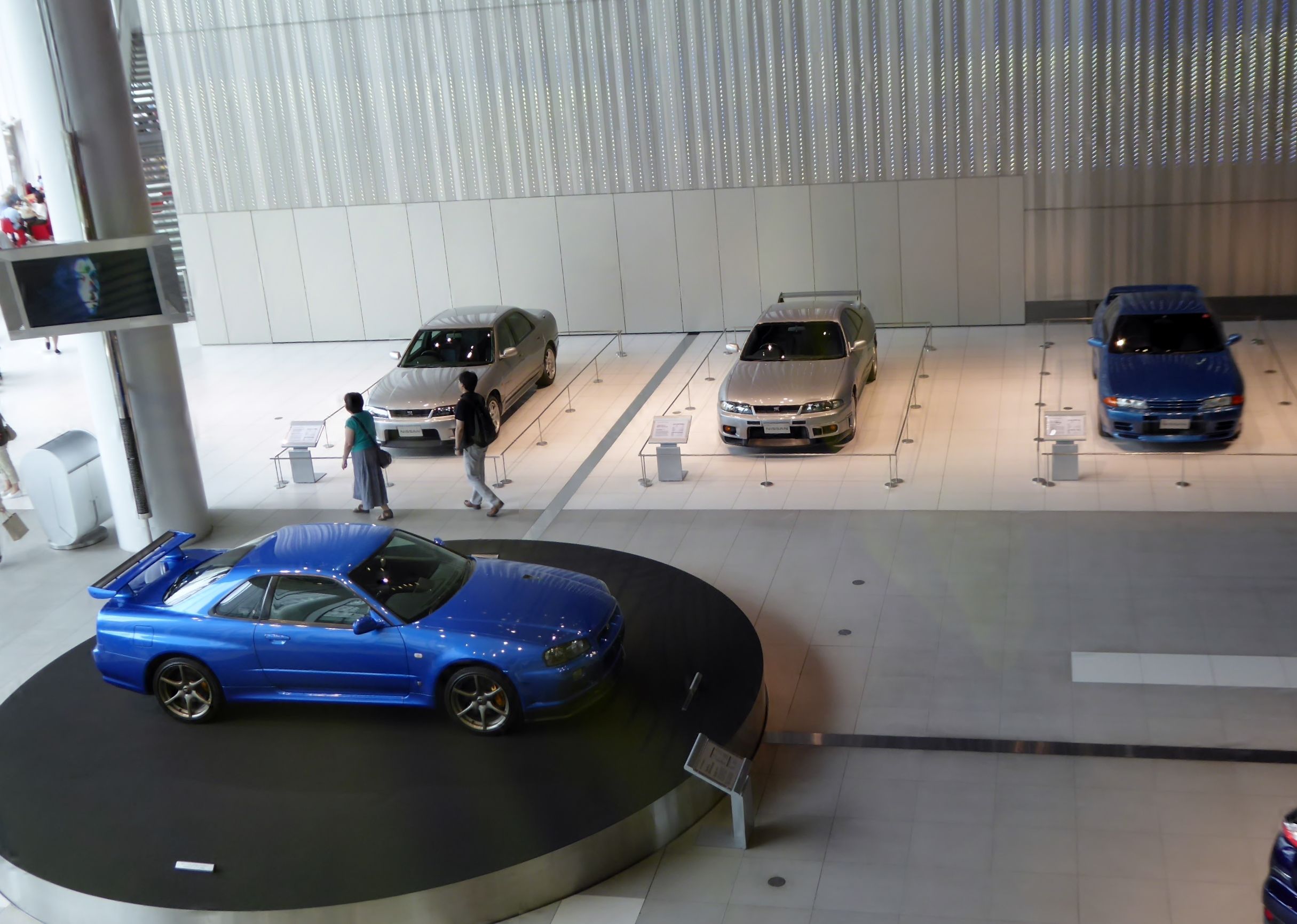
6. **Nissan GT-R**
The Nissan GT-R, affectionately known as ‘Godzilla,’ once stood as a monumental challenge to the supercar establishment. With a staggering 565 horsepower and an estimated starting MSRP of $122,985, it offered supercar-slaying performance at a price point that, while high, significantly undercut its European rivals. It was a technological tour de force, leveraging advanced electronics to deliver mind-bending acceleration and grip that defied physics.
Yet, according to Steve May, an automotive expert who founded NumberPlates4You after 25 years in the industry, the GT-R’s luster has dulled considerably over time. He contends that this once revolutionary machine “now feels like one of the most clichéd sports cars on the road.” The core of the problem, May explains, is that “Nissan stopped updating the R35 GT-R,” leading to a stagnation in its evolution while the rest of the automotive world marched forward.
Car and Driver backs this sentiment up, offering a rather blunt summation: “R35 generation dates to 2009, interior lacks refinement, seems crude and rude by today’s standards.” For a car that starts well into six figures, an interior described as crude and lacking refinement is a significant drawback. May suggests that for “more bang for your buck,” one might seriously “consider some Porsche models or even yield to a whim and go for a Corvette,” highlighting that the GT-R, despite its power, no longer offers the same compelling value proposition it once did in a rapidly evolving performance car landscape.”
Car Model Information: 2016 Nissan GT-R Premium
Name: Nissan GT-R
Manufacturer: Nissan
ModelCode: R35
Production: December 2007 – August 2025
ModelYears: 2009–2024 (North America)
Assembly: Kaminokawa, Tochigi
Designer: unbulleted list
Class: Sports car
BodyStyle: 2+2 (car body style)
Layout: front-engine, four-wheel-drive layout
Platform: Nissan Premium Midship
Related: Nissan Juke-R
Engine: Nissan VR engine#VR38DETT,V6 engine
Powerout: unbulleted list
Abbr: on
Order: flip
Transmission: BorgWarner
Wheelbase: 2780 mm
Length: unbulleted list
Width: unbulleted list
Height: unbulleted list
Weight: unbulleted list
Predecessor: Nissan Skyline GT-R
Sp: uk
Categories: 2010s cars, 2020s cars, All-wheel-drive vehicles, Articles with hAudio microformats, Articles with short description
Summary: The Nissan GT-R (Gran Turismo–Racing; model code: R35; Japanese: 日産・GT-R; Nissan GT-R) is a sports car, built by Japanese marque Nissan from 2007 to 2025. It has a 2+2 seating layout and is also considered a grand tourer. The engine is front-mid mounted and drives all four wheels. It succeeds the Nissan Skyline GT-R, a high-performance variant of the Nissan Skyline. Although this model was the sixth-generation to bear the GT-R name, it is no longer part of the Skyline line-up. The car was built on the PM platform, derived from the FM platform used in the Skyline and Nissan Z models. Production was conducted in a shared production line at Nissan’s Tochigi plant in Japan.
As per Nissan’s intention of creating a world beating sports car, the GT-R brand was revived as part of the Nissan Revival Plan. Overall development began in 2000, following seven years of development and testing, including the introduction of two concept models in 2001 and 2005. The production version of the GT-R was unveiled at the 2007 Tokyo Motor Show. The GT-R was a brand-new car built on the PM platform, and featured innovative concepts and technologies, such as advanced aerodynamics, the VR38DETT engine, an active suspension system and the ATTESA E-TS Pro all-wheel-drive system; it the first ever rear mounted independent transaxle all-wheel-drive vehicle. It was one of the first production cars to feature launch control and a dual-clutch transmission. The overall body was made out of steel, aluminium and carbon-fibre.
Unlike its predecessors, the GT-R was offered worldwide. It received various facelifts and updates comparable with the competition, and several special editions were offered during its prolonged production span. The car is used in motorsports, notably winning championships in the FIA GT1 World Championship, Super GT and in various GT3 racing series, including the GT World Challenge. It is well received among enthusiasts and automotive publications, British motor magazine Top Gear claimed it as “one of the most incredible cars of any kind ever built”, due its exceptional performance and practicality given at an affordable price. Being one of the fastest production cars—as it set the record for the fastest accelerating four-seater production car—it has won numerous notable accolades such as the World Performance Car of The Year among many others.
Sales in the Australian market were discontinued due to new side impact regulations. The European market, including the United Kingdom, were also suspended, with new noise regulations. Followed by the suspension of sales in North America, sales in Japan and other markets remained until August 2025, ending production of the GT-R after 18 years and nearly 48,000 units produced.
Get more information about: Nissan GT-R
Buying a high-performing used car >>>
Brand: Nissan Model: GT-R
Price: $98,949 Mileage: 35,015 mi.
Read more about: The Ultimate Nineties Rewind: 15 Coolest Cars of the Decade That Still Fuel Our Automotive Dreams
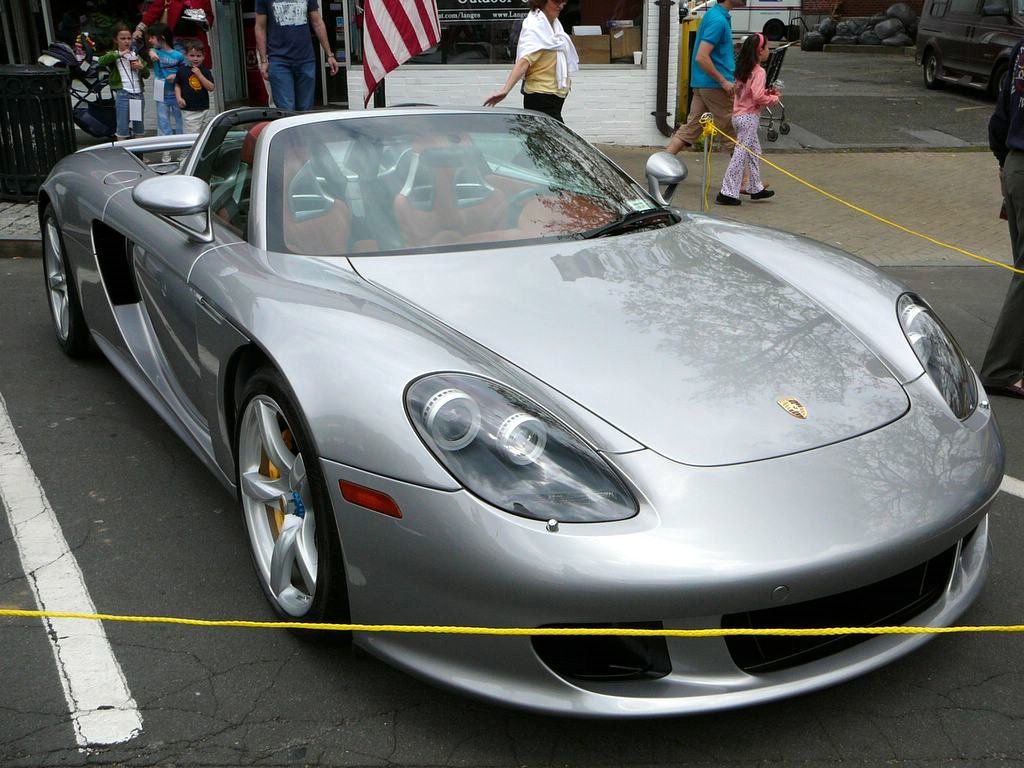
7. **Porsche Carrera GT**
Ah, the Porsche Carrera GT. The very name evokes images of apex predators and track legends. It’s a machine universally appreciated by auto enthusiasts, Steve May included, for its sheer power, undeniable beauty, and blistering performance. With its mighty 5.7-liter V10 engine, the Carrera GT is an engineering marvel, delivering an incredibly powerful and raw driving experience that speaks directly to the soul of anyone who loves a true performance car. The MSRP, a cool $448,400, firmly places it in the realm of hypercars, where expectations for an uncompromised experience are sky-high.
Yet, even with its stratospheric price tag and legendary status, May, an automotive expert with 25 years in the industry, raises a crucial, even alarming, red flag. He contends that the Carrera GT stands out as “one of the riskiest cars from the brand,” a bold statement for a marque known for precision and driver confidence. His concern centers not on its power or speed, but on a critical oversight that, especially in a vehicle of this caliber, feels almost unthinkable in today’s automotive landscape.
The heart of May’s warning is simple yet profound: the Carrera GT conspicuously “misses out on essential safety features like traction control and ABS.” Imagine that – a vehicle pushing nearly 600 horsepower, capable of astonishing speeds, without the electronic safety nets that are standard on far more pedestrian cars. This isn’t just a quirky omission; it creates a dangerously “tight margin for error,” turning an exhilarating drive into a white-knuckle gamble.
For May, this lack of fundamental driver aids means the car is decidedly “not the best choice for beginners.” But he doesn’t stop there. He firmly believes that even the most “skilled drivers would find this car challenging,” transforming what should be a symphony of power and control into a constant battle against physics and potential catastrophe. In an era where driver safety is paramount, the Carrera GT’s pure, untamed nature, while appealing to some, makes it a questionable choice for anyone seeking a modicum of forgiveness on the road.
So, while the allure of a legendary Porsche is undeniable, the Carrera GT serves as a stark reminder that sometimes, sheer power and pedigree aren’t enough. The absence of crucial safety features makes this a true widowmaker in the wrong hands, and a perpetual challenge even in the most experienced ones, pushing it squarely into the ‘buyer’s remorse’ category for all but the most masochistic collectors.
Car Model Information: 2023 Dodge Charger SXT
Name: Porsche Carrera GT
Manufacturer: Porsche
Production: 2003–2006,1,270 produced
Assembly: Leipzig
Designer: Harm Lagaay
Class: Sports car
BodyStyle: Targa top,Roadster (automobile)
Layout: Rear mid-engine, rear-wheel drive layout
Engine: 5733 cc
Abbr: on
Order: Porsche V10 engine,Overhead camshaft#Dual overhead camshaft,V10 engine
Powerout: 450 kW
Transmission: Manual transmission
Wheelbase: 2730 mm
Length: 4613 mm
Width: 1921 mm
Height: 1166 mm
Weight: 1380 kg
Sp: us
Predecessor: Porsche_911_GT1#Street-legal_version
Successor: Porsche 918 Spyder
Categories: All articles needing additional references, All articles with dead external links, Articles needing additional references from August 2022, Articles with dead external links from August 2023, Articles with dead external links from May 2025
Summary: The Porsche Carrera GT (Project Code 980) is a mid-engine sports car that was manufactured by German automobile manufacturer Porsche from 2003 to 2006. Sports Car International named the Carrera GT number one on its list of Top Sports Cars of the 2000s, and number eight on its Top Sports Cars of All Time list. For its advanced technology and development of its chassis, Popular Science magazine awarded it the “Best of What’s New” award in 2003.
Get more information about: Porsche Carrera GT
Buying a high-performing used car >>>
Brand: Porsche Model: Carrera GT
Price: $30,999 Mileage: 53,386 mi.
Read more about: Veteran Driver’s Genius Moves: Master Any Tight Parking Spot Without Breaking a Sweat
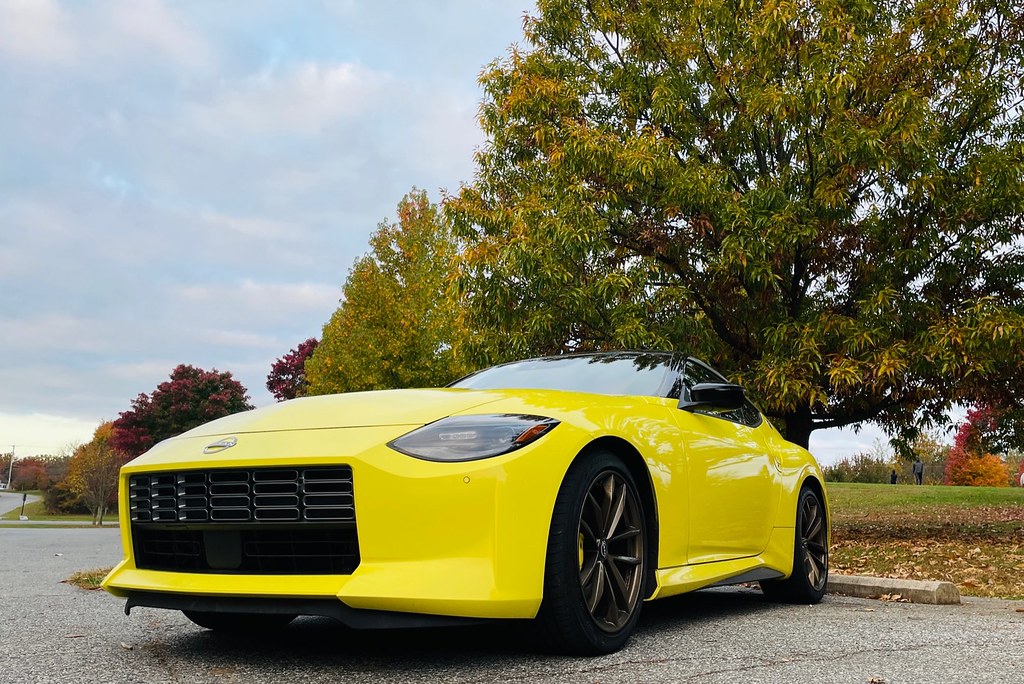
8. **Nissan Z**
For decades, the Nissan Z has been synonymous with accessible sports car thrills, offering potent performance and distinctive styling without completely breaking the bank. The latest iteration of the Nissan Z, with an MSRP ranging from $44,110 to $66,890, continues this legacy, promising a blend of power and excitement that should, on paper, satisfy the cravings of many enthusiasts. Chris Pyle, another seasoned auto expert from JustAnswer, acknowledges the car’s inherent strength, pointing out its significant power output.
However, Pyle quickly pivots to a glaring weakness that compromises the entire driving experience. He remarked, quite bluntly, that the Nissan Z possesses “all that power but wimpy brakes to stop it.” This isn’t just a minor complaint; it’s a fundamental imbalance. A sports car isn’t just about how fast it can go; it’s crucially about how effectively it can shed that speed. When the stopping power doesn’t match the going power, you’re looking at a recipe for unease, if not outright danger.
The issues with the brakes go deeper than just being “wimpy.” Pyle elaborated that the car’s ABS system suffers from serious problems, “often leading to the ABS thinking you are losing control and derating the engine performance.” Imagine trying to push your sports car hard, only for the car’s own safety system to intervene erroneously, cutting power when you least expect it. This not only detracts from the driving experience but actively undermines the car’s performance capabilities, turning thrilling moments into frustrating, confidence-sapping ones.
Beyond the performance and safety concerns, there’s a more prosaic, yet equally irritating, financial drawback. Pyle points out that the Nissan Z “requires pricey 93 octane fuel.” While performance cars are indeed notorious for demanding premium fuel, it’s another line item on the budget that adds up, particularly when coupled with the underlying issues that make the car feel less than ideal. This combination of compromised performance, a potentially faulty safety system, and ongoing higher running costs makes the Nissan Z a frustrating proposition for those seeking unadulterated sports car enjoyment.
Ultimately, while the Nissan Z delivers on the promise of power, its critical shortcomings in braking and ABS functionality, coupled with the ongoing expense of premium fuel, make it a strong contender for buyer’s remorse. For a car meant to be driven hard and enjoyed, these issues are not just inconveniences; they are fundamental flaws that prevent the car from truly living up to its potential and, more importantly, to its price tag.
Car Model Information: 2024 Nissan Z Performance Auto
Name: Nissan Z-car
Caption: 1970 Datsun 240Z (S30)
Aka: Nissan Fairlady Z (Japan)
Manufacturer: Nissan
Production: October 1969 – present
Assembly: ubl
Class: Sports car,Grand tourer,Track Car
Layout: Front-engine, rear-wheel-drive layout,Front-engine, rear-wheel-drive layout#Front mid-engine, rear-wheel-drive layout
Predecessor: Datsun Sports
Categories: 1970s cars, 1980s cars, 1990s cars, 2000s cars, 2010s cars
Summary: The Nissan Z-series is a model series of sports cars manufactured by Nissan since 1969.
The original Z was first sold on October of 1969 in Japan as the Nissan Fairlady Z (Japanese: 日産・フェアレディZ, Hepburn: Nissan Fearedi Zetto) at Nissan Exhibition dealerships that previously sold the Nissan Bluebird. It was initially marketed as the Datsun 240Z for international customers. Since then, Nissan has manufactured seven generations of Z-cars, with the most recent—simply known as the Nissan Z—in production since 2022.
Main rival cars in the Japanese market included the Toyota Celica, Toyota Supra, Mitsubishi 3000GT and Mazda RX-7.
The earlier models of the Nissan Z were built at the Nissan Shatai plant in Hiratsuka until 2000, while the later models (350Z and 370Z) are built at Oppama (2002–2004) and Tochigi (2004–present). Known for their looks, reliability, performance and affordability, every Z car has been sold in Japan as the Fairlady Z and elsewhere under the names Nissan Fairlady Z (S30), Nissan Fairlady Z (S130), Nissan 300ZX, Nissan 350Z, Nissan 370Z and Nissan Z.
Get more information about: Nissan Z-car
Buying a high-performing used car >>>
Brand: Nissan Model: Z
Price: $40,569 Mileage: 2,288 mi.
Read more about: 15 Vehicles Owners Wish They’d Never Bought: Your Essential Guide to Avoiding Automotive Regrets
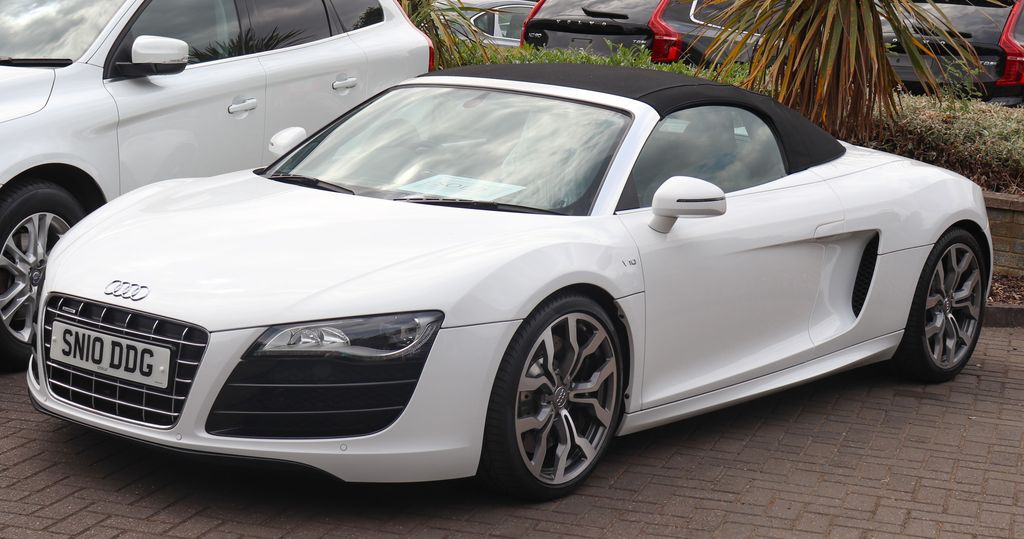
9. **Audi R8**
The Audi R8 is undeniably a stunner, a masterpiece of sleek design and intoxicating V10 power that commands attention. With an MSRP ranging from $161,395 to $253,290, it sits comfortably in the exotic car segment, offering a luxurious and high-performance experience that most enthusiasts dream of. Indeed, Audis are often characterized as “sleek and gorgeous,” and the R8 is perhaps the pinnacle of that aesthetic. It promises exclusivity, speed, and a daily drivability that many supercars can’t match.
However, Chris Pyle, our trusted auto expert, quickly dispels any illusions of the R8 being a sound financial decision. He delivers a sobering truth: “Cars are not investments, but this one is crazy, losing 50% of the value in the four-to-five-year range.” This rapid depreciation is a brutal reality for any owner, effectively turning a quarter-million-dollar purchase into a six-figure loss in just a few short years. The initial thrill of ownership quickly evaporates when confronted with such a steep drop in value, making it a “money pit” in the truest sense.
And the financial woes don’t stop at depreciation. Pyle goes on to explain that even “basic maintenance is quite expensive,” a common refrain for exotic cars, but one that stings even more when coupled with such dramatic value loss. We’re not talking about simple oil changes here; complex German engineering means specialized labor and parts that come with premium price tags. This elevates the ongoing cost of ownership to levels that can genuinely shock even affluent buyers.
Furthermore, Pyle points out that these maintenance costs are “before factoring in expensive loan, insurance and repair costs.” The R8, being a high-performance, high-value vehicle, naturally incurs significant expenses for financing, comprehensive insurance coverage, and any unexpected repairs. The cumulative effect of these costs, combined with the catastrophic depreciation, paints a picture of financial hemorrhaging that few buyers are truly prepared for.
With rumors of the Audi R8 making a comeback in 2027, potentially with a projected price tag of $210,000 to $225,000, Pyle’s advice rings even truer. While the car’s performance and aesthetics are undeniably appealing, its financial liabilities are simply too great to ignore. For anyone considering an R8, the realization that it’s a beautiful, fast car that drains your bank account faster than it empties its fuel tank is a recipe for serious buyer’s remorse.
Car Model Information: 2011 Audi R8 4.2 quattro
Caption: Audi R8 V10 Plus (Type 4S)
Manufacturer: Audi
Production: June 2006 – March 2024,(45,949 Units)
Class: Sports car
BodyStyle: coupé
Layout: Longitudinal engine,Mid-engine design,rear-wheel-drive
Sp: uk
ModelYears: 2007–2024
Categories: 2010s cars, 2020s cars, All articles with unsourced statements, Articles with short description, Articles with unsourced statements from March 2019
Summary: The Audi R8 is a mid-engine, 2-seater sports car, which uses Audi’s trademark quattro permanent all-wheel drive system. It was introduced by the German car manufacturer Audi AG in 2006. Production ended in the first quarter of 2024.
The car is exclusively designed, developed, and manufactured by Audi AG’s private subsidiary company manufacturing high performance automotive parts, Audi Sport GmbH (formerly quattro GmbH), and is based on the Lamborghini Gallardo and presently the Huracán platform. The fundamental construction of the R8 is based on the Audi Space Frame, and uses an aluminium monocoque which is built using space frame principles. The car is built by Audi Sport GmbH in a newly renovated factory at Audi’s ‘aluminium site’ at Neckarsulm in Germany. At the time it was introduced in 2006, the R8 became the first production car with full-LED headlamps.
Get more information about: Audi R8
Buying a high-performing used car >>>
Brand: Audi Model: R8
Price: $69,995 Mileage: 44,740 mi.
Read more about: Remember These? 9 Forgotten Pop Stars from the ’80s Who Shone Brightly with Just One Massive Hit!
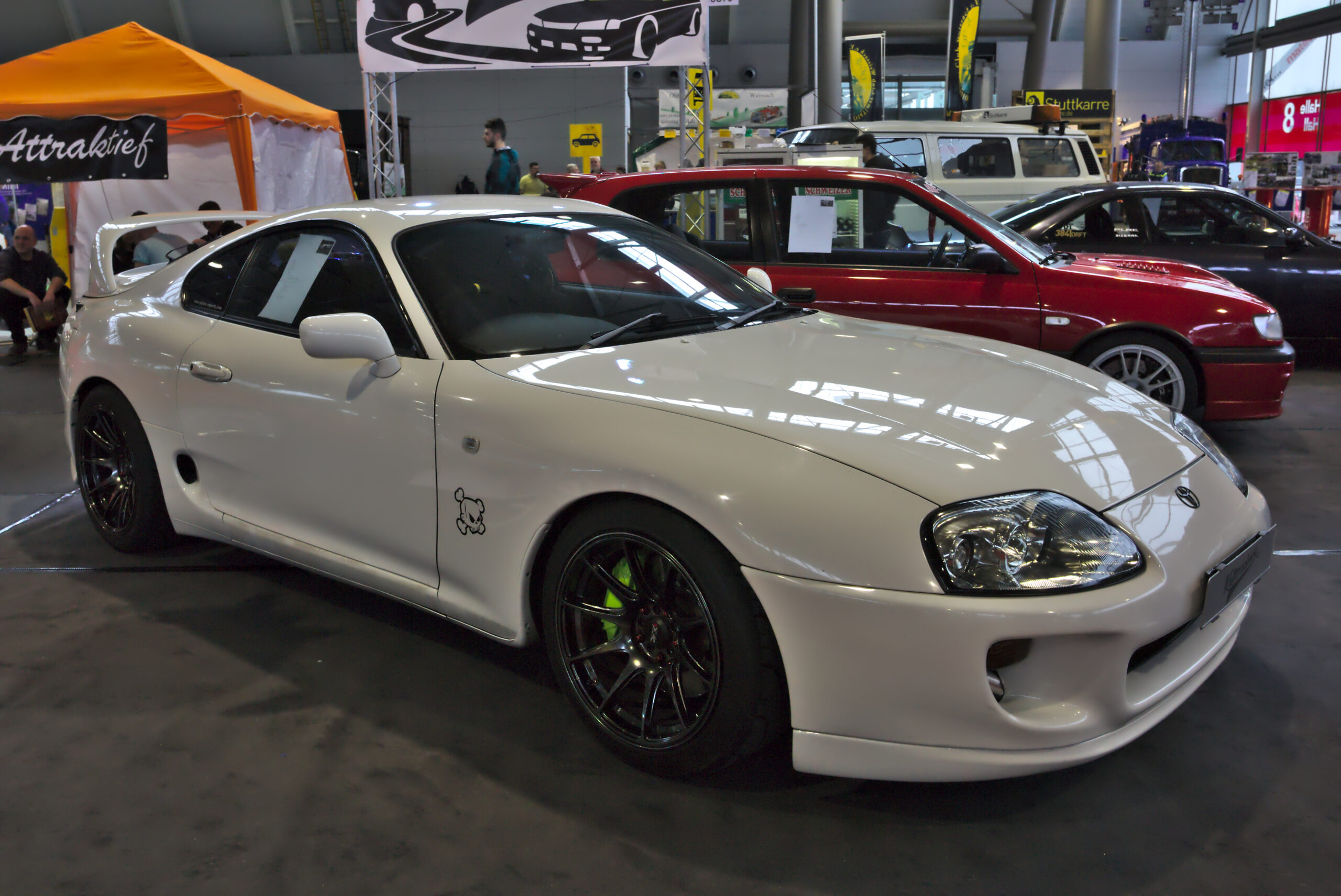
10. **Toyota Supra**
The Toyota Supra holds a legendary status, particularly among “Fast and Furious” fans and performance enthusiasts alike. It’s a name synonymous with robust performance, tunability, and an almost bulletproof reputation for reliability. When the GR Supra returned, it generated immense excitement, rekindling the flame for a new generation of drivers. With an MSRP of $57,445 to $60,595, it positions itself as a premium, yet attainable, sports car. Chris Pyle, the auto expert, is quick to acknowledge the excellence of one particular variant, stating, “The six-cylinder is awesome.”
However, Pyle’s praise comes with a very specific, and crucial, caveat: he explicitly advises “staying away from the four-cylinder version of the Toyota GR Supra.” This isn’t just a matter of preference; it points to a significant disparity in the driving experience and overall value proposition between the two engine choices. While the four-cylinder might be more fuel-efficient, it clearly fails to deliver the same level of performance and excitement that enthusiasts expect from a Supra, making it a compromised choice in a car renowned for its power.
The real issue, however, stems from an unexpected collaboration that has practical implications for ownership. Pyle reveals that “some of the parts under the hood are not made by Toyota; they are BMW.” This isn’t necessarily a bad thing in terms of quality, as BMW is known for its engineering prowess. But it introduces a logistical challenge that can quickly turn into a nightmare for owners when something inevitably needs replacement or repair.
The consequence of these BMW-sourced parts is quite stark: it “makes it hard to acquire them in a timely fashion.” Picture this: your beloved Supra is sidelined, waiting for a crucial component that isn’t readily available through Toyota’s extensive parts network. This can lead to extended downtime, immense frustration, and potentially lost driving enjoyment for weeks or even months. The promise of a reliable Toyota is overshadowed by the reality of exotic car-like parts availability issues.
So, while the Supra’s heritage and the six-cylinder model’s performance are compelling, the four-cylinder variant, coupled with the potential headaches of sourcing BMW-specific parts, makes it a prime candidate for buyer’s remorse. For a car that should be a joy to own and drive, the hassle of prolonged repairs due to parts availability can quickly sour the entire experience, making that initial saving on the four-cylinder seem like a very poor trade-off indeed.
Car Model Information: 1995 Toyota Supra SZ
Name: Toyota Supra
Caption: Toyota GR Supra (J29/DB)
Manufacturer: Toyota
Aka: unbulleted list
Production: unbulleted list
Class: Sports car
BodyStyle: fastback,coupé
Layout: Front-engine, rear-wheel-drive layout
Predecessor: Toyota Celica (A20)
Categories: 1980s cars, 1990s cars, 2000s cars, 2010s cars, 2020s cars
Summary: The Toyota Supra (Japanese: トヨタ・スープラ, Hepburn: Toyota Sūpura) is a sports car and grand tourer manufactured and developed by the Toyota Motor Corporation beginning in 1978. The name “supra” is a definition from the Latin prefix, meaning “above”, “to surpass” or “go beyond”.
The initial four generations of the Supra were produced from 1978 to 2002. The fifth generation has been produced since March 2019 and later went on sale in May 2019. The styling of the original Supra was derived from the Toyota Celica, but it was longer. Starting in mid-1986, the A70 Supra became a separate model from the Celica. In turn, Toyota also stopped using the prefix Celica and named the car Supra. Owing to the similarity and past of the Celica’s name, it is frequently mistaken for the Supra, and vice versa. The first, second and third generations of the Supra were assembled at the Tahara plant in Tahara, Aichi, while the fourth generation was assembled at the Motomachi plant in Toyota City. The 5th generation of the Supra is assembled alongside the G29 BMW Z4 in Graz, Austria by Magna Steyr.
The Supra traces much of its roots back to the 2000GT owing to an inline-6 layout. The first three generations were offered with a direct descendant to the Crown’s and 2000GT’s M engine. Interior aspects were also similar, as was the chassis code “A”. Along with this name, Toyota also included its own logo for the Supra. It was derived from the original Celica logo, being blue instead of orange. This logo was used until January 1986, when the A70 Supra was introduced. The new logo was similar in size, with orange writing on a red background, but without the dragon design. That logo, in turn, was on Supras until 1991 when Toyota switched to its current oval company logo. The dragon logo was a Celica logo regardless of what colour it was. It appeared on the first two generations of the Supra because they were officially Toyota Celicas. The dragon logo was used for the Celica line until it was also discontinued.
In 1998, Toyota ceased sales of the fourth-generation Supra in the United States. Production of the fourth-generation Supra for worldwide markets ended in 2002. In January 2019, the fifth-generation Supra, which was co-developed with the G29 BMW Z4, was introduced.
Get more information about: Toyota Supra
Buying a high-performing used car >>>
Brand: Toyota Model: Supra
Price: $49,999 Mileage: 16,556 mi.
Read more about: Beyond the Neon Glow: Revisiting 14 Unforgettable ’80s Sports Cars That Defined a Decade of Driving Passion
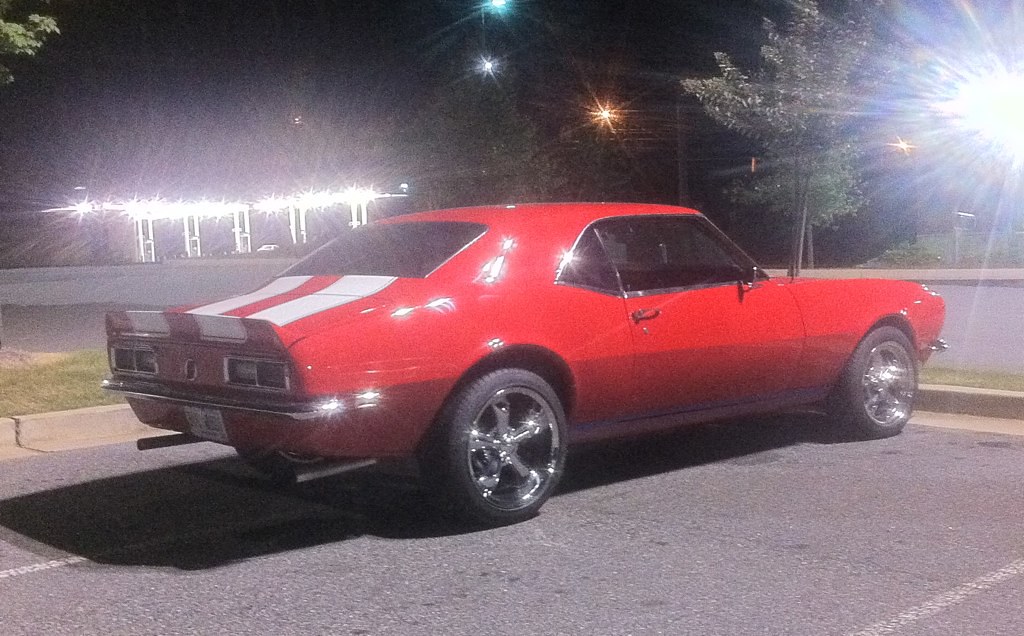
11. **Chevy Camaro**
For generations, the Chevrolet Camaro has been a quintessential slice of Americana, an icon of muscle car performance and rebellious spirit. It’s the kind of car that evokes powerful emotions, conjuring images of open roads and roaring V8 engines. With an MSRP ranging from $32,495 to $54,895, it’s often seen as an accessible entry point into the world of performance cars. Many of us want that piece of American automotive history, that visceral connection to power and freedom.
However, Chris Pyle, the auto expert, throws a bucket of cold water on that sentimental notion. His assessment is blunt: the Camaro “has reached the end of life.” This declaration signals not just the discontinuation of current models, but a future fraught with practical ownership issues. The most immediate concern, according to Pyle, is that “parts will become scarce.” This is a significant drawback, as future repairs and maintenance could become incredibly challenging and costly, turning a straightforward fix into a prolonged saga.
Pyle’s criticism isn’t limited to the future parts supply. He also expresses serious dissatisfaction with the quality of more recent models, stating unequivocally, “The quality is really cheap inside and out.” This is a harsh indictment for any vehicle, let alone one designed to evoke passion and performance. A cheap-feeling interior detracts from the daily driving experience, eroding the sense of pride and enjoyment that should come with owning a sports car, while exterior quality issues can lead to premature wear and a less appealing aesthetic.
Perhaps most damning for those considering a Camaro as any form of asset or investment, Pyle offers a grim prognosis on its future value. He warns that the car “will only collect people offering you far less than what you think it is worth.” This stark reality underscores the fact that, despite its storied past, the current Camaro lineup struggles with resale value, further cementing its position as a potential source of buyer’s remorse. The dream of owning an American legend clashes harshly with the reality of dwindling parts, questionable build quality, and rapid depreciation.
Ultimately, while the Chevrolet Camaro might hold a special place in automotive lore and in the hearts of many, the practicalities of owning recent models, especially as it approaches the end of its production cycle, make it a difficult recommendation. The combination of looming parts scarcity, perceived low quality, and poor resale value suggests that for many, this slice of Americana will deliver huge bills and disappointment rather than the exhilarating experience they initially sought.
Car Model Information: 2018 Chevrolet Camaro 1LS
Name: Chevrolet Camaro
Manufacturer: Chevrolet
Production: 1966–2002,2009–2023
ModelYears: 1967–2002,2010–2024
Class: Pony car
BodyStyle: coupe,convertible
Platform: GM F platform,GM Zeta platform,GM Alpha platform
Layout: Front-engine, rear-wheel-drive layout
Categories: 1970s cars, 1980s cars, 1990s cars, 2+2 coupés, 2000s cars
Summary: The Chevrolet Camaro is a mid-size American automobile manufactured by Chevrolet, classified as a pony car. It first went on sale on September 29, 1966, for the 1967 model year and was designed to compete with the Ford Mustang. The Camaro shared its platform and major components with the Firebird, produced by General Motors’ Pontiac division that was also introduced for the 1967 model year.
Four distinct generations of the Camaro were developed before production ended in 2002. The nameplate was revived on a concept car that evolved into the fifth-generation Camaro; production started on March 16, 2009.
Production of the sixth generation of the Camaro ended in December 2023, for the 2024 model year.
Get more information about: Chevrolet Camaro
Buying a high-performing used car >>>
Brand: Chevrolet Model: Camaro
Price: $19,125 Mileage: 69,196 mi.
Read more about: Brace Yourself: The 10 Cars That Instantly Trigger ‘Bad Driver’ Alarms on the Road
So, there you have it: a deep dive into the darker side of sports car ownership. The allure of speed, power, and prestige is undeniable, but as we’ve seen, it often comes with a hefty price tag that extends far beyond the MSRP. From hidden maintenance nightmares and questionable reliability to rapid depreciation and a surprising lack of essential features, many high-performance machines can quickly transform from dream cars into financial and emotional burdens. As senior media editor, I’ve seen countless stories of enthusiasm turning to regret, and the automotive experts we’ve consulted consistently underscore the importance of looking beyond the glossy advertisements and visceral thrills. Before you empty your savings account or commit to a multi-year loan for that flashy ride, remember the lessons learned from these particular models. A smart buyer is an informed buyer, and sometimes, the best choice is the one you *don’t* make.



